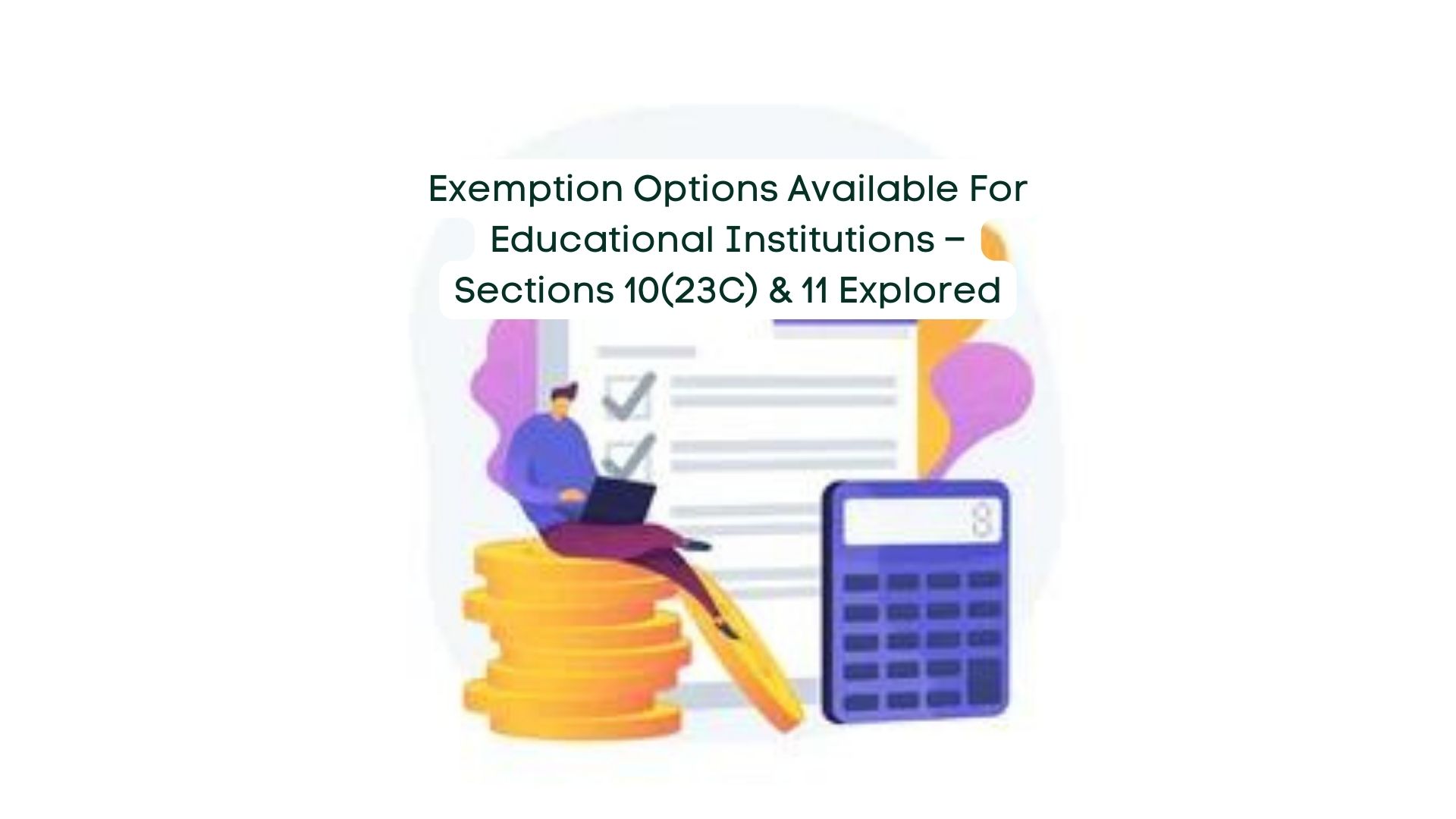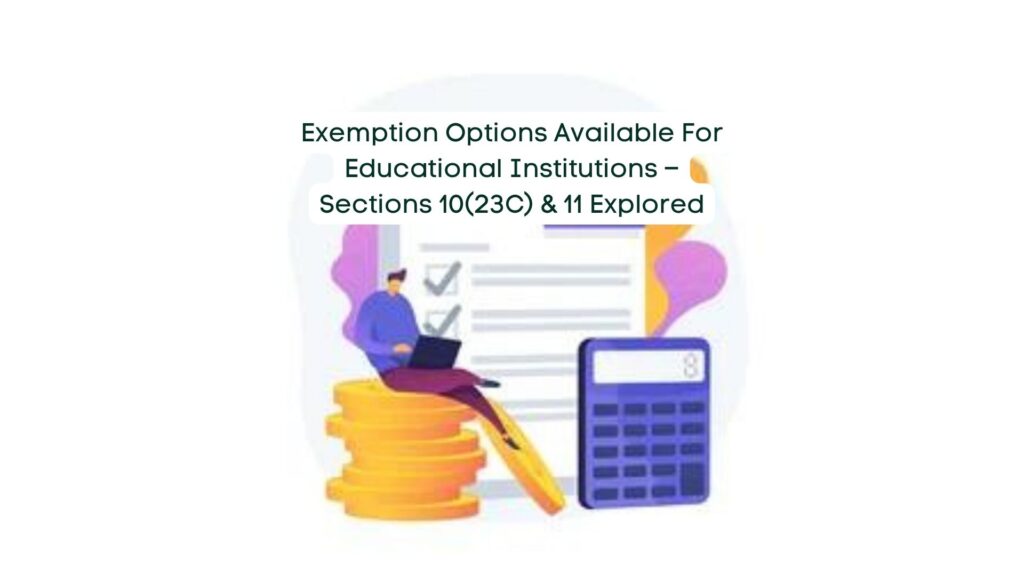
24 Feb Exemption Options Available for Educational Institutions – Sections 10(23C) & 11 Explored

Educational institutions that were registered under section 12AA of the Act could seek exemptions under section 11 of the Act once conditions were fulfilled. Section 11, being a general provision, applied to all charitable institutions, whereas Section 10 (23C) catered to specific exemptions pertinent to certain public and private educational establishments. This article delves into the exemption opportunities available for educational institutions under Sections 10(23C) & 11.
Educational Institutions under Section 10 (23C):
Under the provisions of Section 10 (23C), educational institutions included:
- Government Institutions for Education: These were first-class educational institutions managed by the government and funded by it. Any revenue received by such universities or educational bodies, solely for educational purposes and subsidized by the government, enjoyed full tax exemption under Section 10 (23C)(iiiab). Government institutions didn't require separate permits.
- Educational Institutions with Receipts exceeding Rs. 1 Crore (Now up to 5 Crore): These institutions fell under the purview of Section 10 (23C)(vi). They needed approval from the prescribed authority for tax exemption if their revenue was solely directed towards educational purposes and not for profit. Once the total receipts exceeded Rs. 5 million, separate approval was necessary from the designated authorities.
How to Seek Exemption:
To seek exemption, an educational institution had to apply using Form No. 56D as per Rule 2CA. The application could be submitted at any time but had to be done on or before September 30th or during the relevant assessment year. The designated officer could request necessary documents or information to ascertain the institution’s compliance. Approval or rejection had to be issued within 12 months from the application’s receipt. Once granted, the permit remained valid until revoked, obviating the need for annual renewal.
Income Accumulation as per Section 10 [23C (VI)]:
Institutions falling under Section 10 (23C)(vi) could accumulate only 15% of future proceeds, with any excess included within five years. There was no limit to the accumulation period if the accumulation stayed below fifteen percent of the annual revenue. Accumulated revenue had to be invested in securities defined by Section 11(5). As long as the residue was used solely for educational purposes, the institution retained its nonprofit status.
Return of Income:
Educational institutions mentioned in Section 10 (23C)(iiiab) or (iiiad) or (vi) had to inspect their gross revenue if it exceeded the maximum taxable income, providing refunds as per prescribed procedures.
Audit:
If the total income exceeded the maximum taxable income, the accounts had to be audited by a qualified accountant under S.288(2) and a report submitted in Form 10BB along with revenue refunds for the relevant assessment year.
Withdrawal of Exemption:
The Prescribed Authority had the power to withdraw exemptions granted under Section 10 (23C) if an educational institution was found to have misused funds or violated prescribed conditions. The institution would receive a reasonable hearing period before the permit was withdrawn.
Conclusion:
While Sections 10 (23C)(vi) and 11 addressed different aspects, they shared similarities in requirements such as reimbursement, audit, and accumulation of funds. Institutions complying with Sections 11, 12, and 13 could also qualify for exemptions under Section 10 (23C), subject to satisfying each category’s conditions. The authorities needed to address issues concerning the tendency of Assessing Officers to deny exemptions under Section 11 despite approval under Section 10 (23C), ensuring adherence to set guidelines.


No Comments